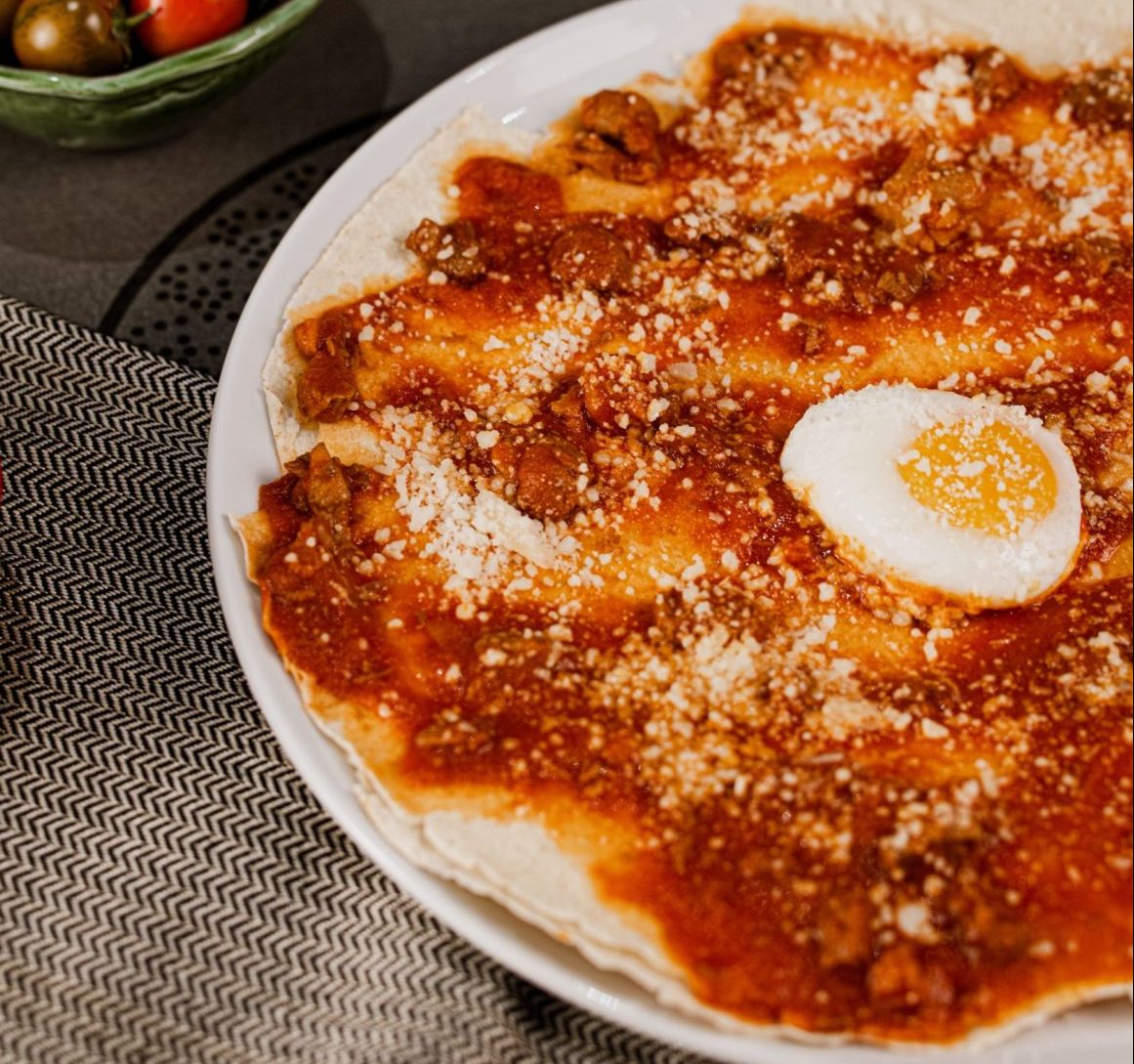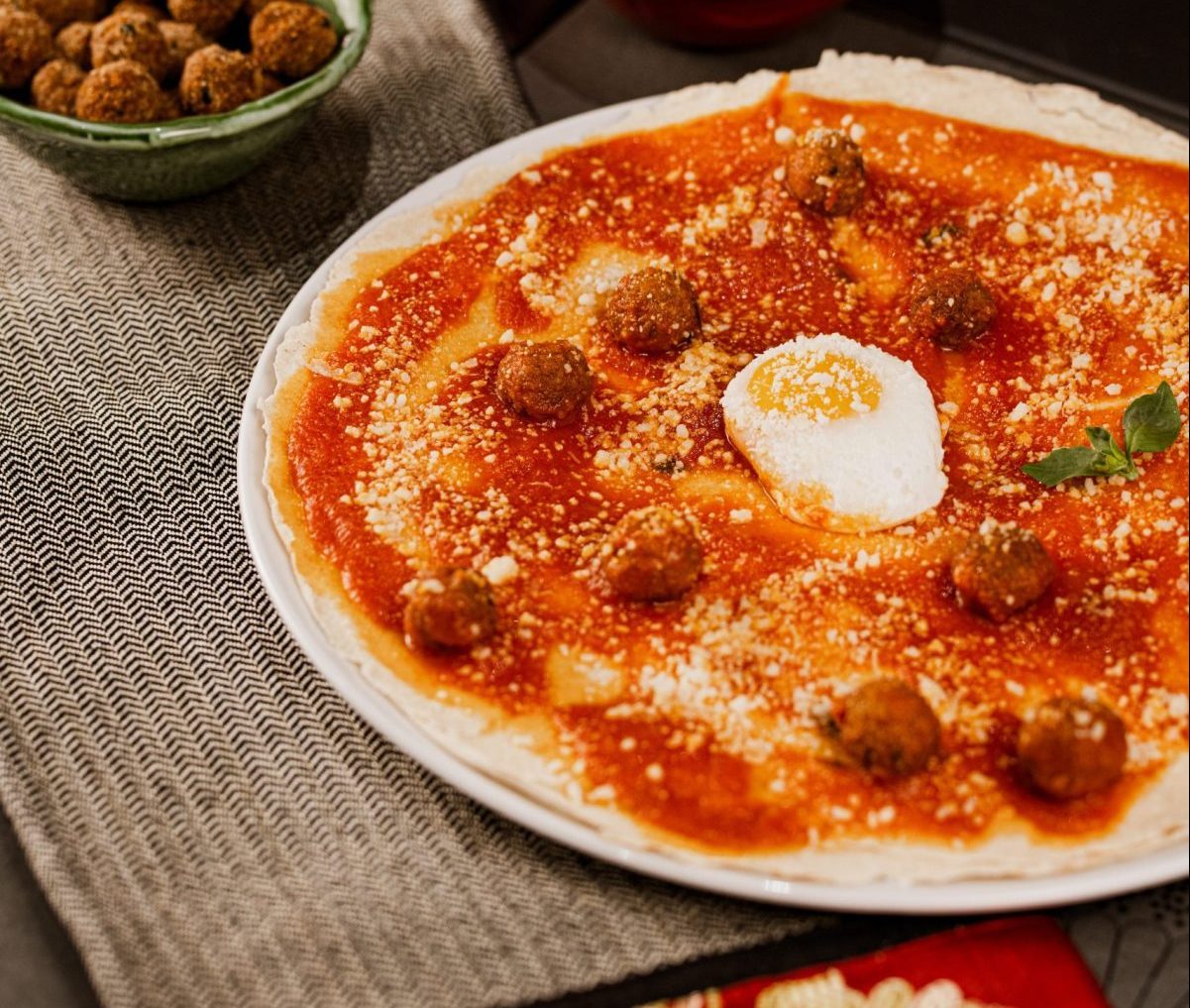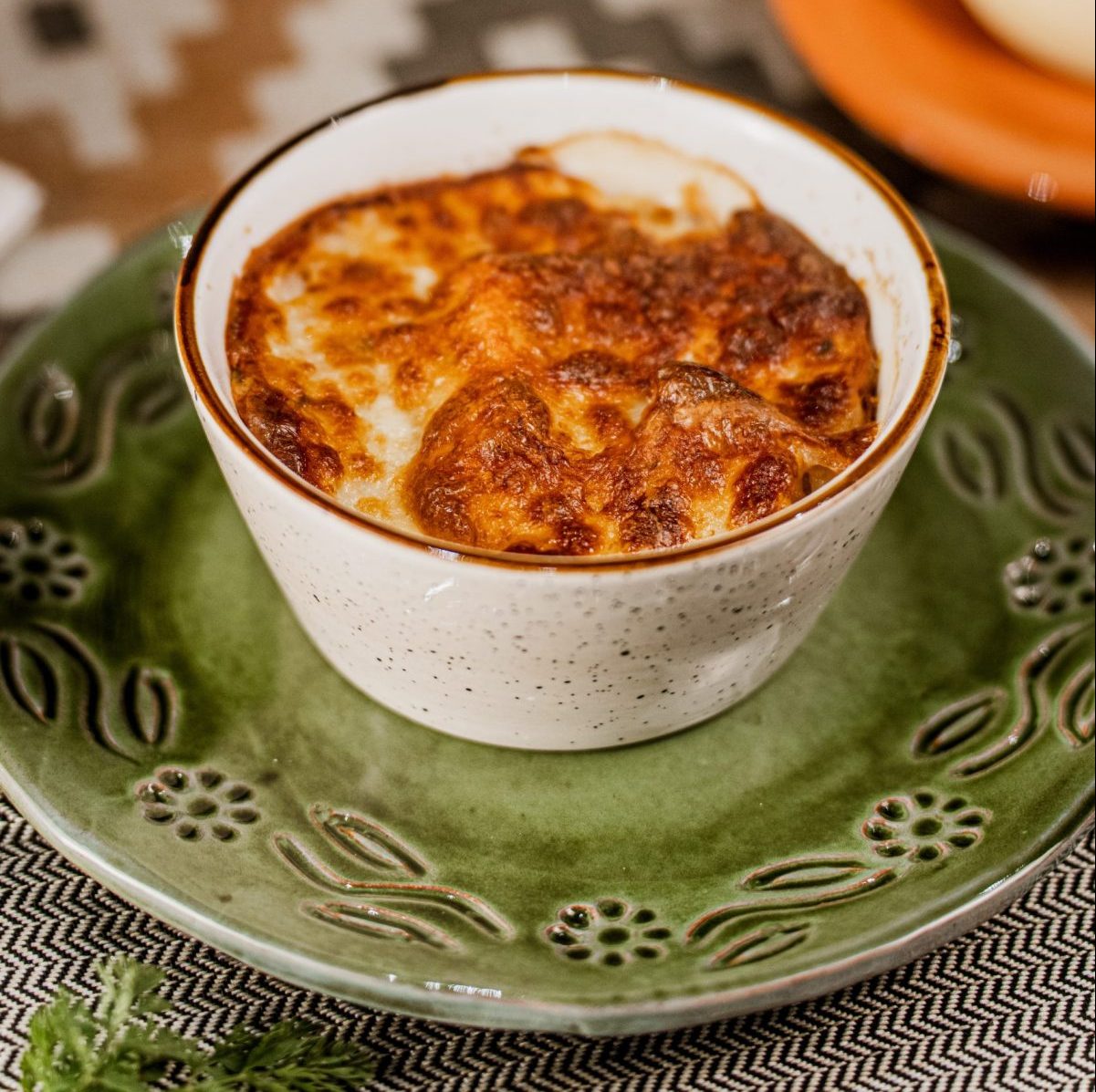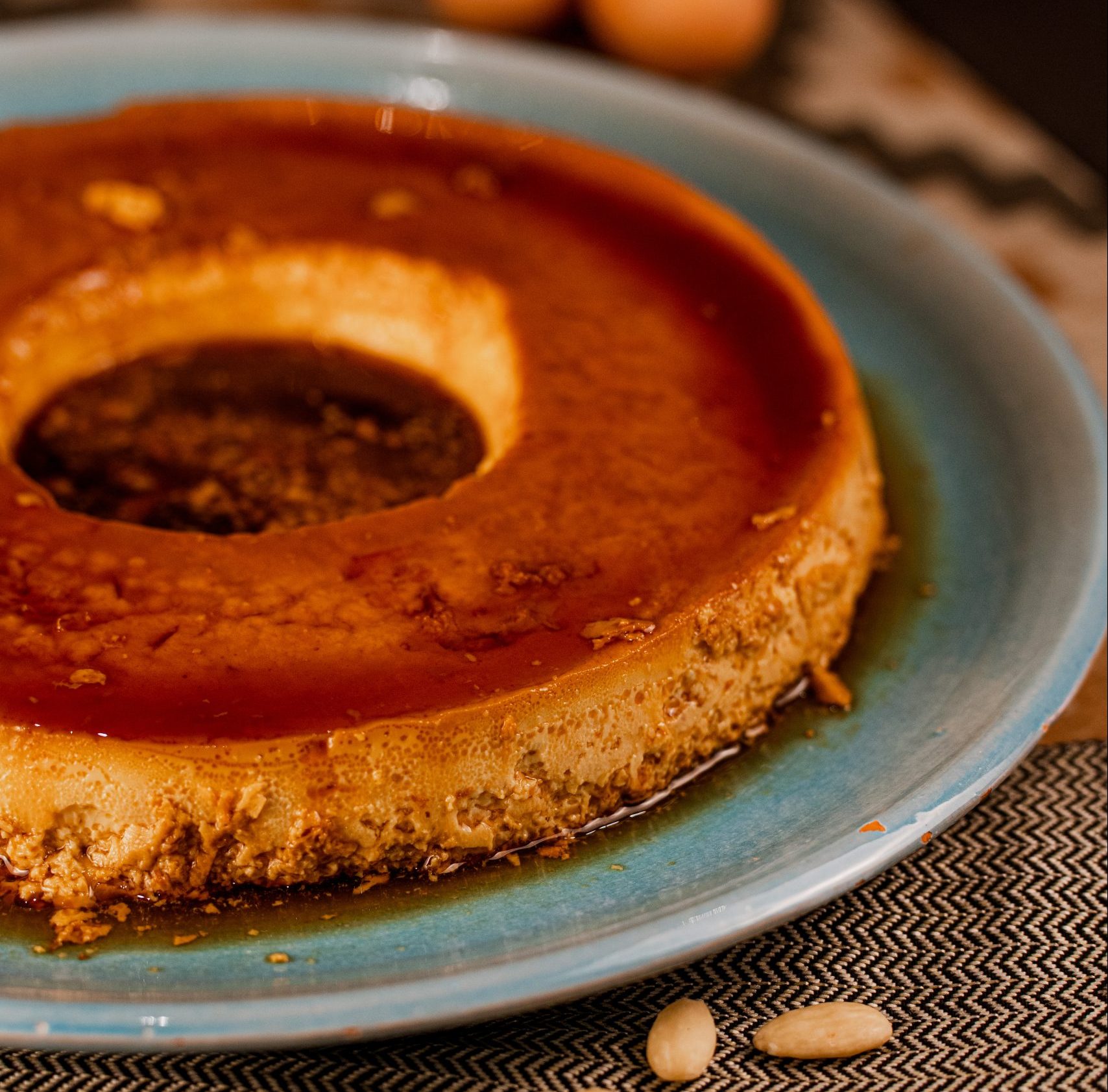Panefratteria: the ancient world of “pane frattau” lives in the center of Cagliari

We went to Panefratteria, the bread tavern in the center of Cagliari: pane frattau, Gallurese soup, Zichi di Bonorva and Pane Cottu di Osilo, traditional recipes make room in modern times.
Sea and city, nightlife and cultural sites, the city of Cagliari is a continuous discovery where natural beauties and architectural monuments meet. In the historic district of Stampace, a few steps from Piazza Yenne stands the majestic Church of Sant’Anna. In front of its stairways, right on the other side of the road, Panefratteria: a real bread tavern.
The restaurant is the union between the modernity of the minimal furniture and the Sardinian tradition that we find in the motifs that decorate the walls of the kitchen, the tables, and the skirting board, inspired by the embroidery of the characteristic Sardinian rugs. But the most evident tradition that Panefratteria wants to bring back to the present is that of an ancient typical Sardinian dish, precisely from Barbagia: the pane frattau.
“Pane frattau” is a complete and genuine dish. For this reason, is also called “shepherd’s dish”. The “king” of Panefratteria’s menu is its classic version with two sheets of carasau bread, first dipped for a fraction of a second in vegetable broth, and then seasoned with sauce, a sprinkling of Sardinian pecorino, and a poached egg in the center.
The types proposed by Panefratteria are many, so we decided to taste more than one with a tasting menu. We started with the classic one which was portioned at the table in six wedges, then rolled up on themselves.
We also tasted a pane frattau with a stronger flavor made of zucchini and ricotta mustia, a typical Sardinian sheep’s milk ricotta with a smoky aftertaste.
We could not resist the version with “su ghisadu”, a sauce with meat typical of north-central Sardinia. For this preparation, the pork and beef stew is left to cook slowly with the tomato sauce which, in turn, absorbs all the flavor. Su ghisadu combined with egg and pecorino leads us to discover Barbagia and its cuisine.
Finally, we also tasted the frattau bread with fried beef meatballs dipped in tomato sauce on top. Another delicious alternative is that of frattau bread with tripe, prepared with sauce and flavored with onion and mint.
Panefratteria also offers a wide choice of vegetarian and gluten-free versions of frattau bread, such as those prepared with vegetables (peppers, aubergines, courgettes, artichokes, mushrooms, cabbage and cauliflower). The vegetable variants change regularly throughout the year, following the seasonality of the product: peas in spring or pumpkin in autumn…
If we talk about Zichi di Bonorva, bread and Sardinian tradition lovers will already know what it is. We, on the other hand, discovered it right at Panefratteria, enjoying their version of Zichi con ghisadu. This dish is obtained by roughly breaking the Zichi bread – a bread devoid of moisture – which is then baked for a few moments in boiling water, just like pasta, and then seasoned in different ways.
To conclude this “trio” of bread, it is impossible not to try the Gallura soup or the “Pane Cottu di Osilo”: two dishes in which the main product is stale bread. We tried the Gallura soup, baked in the oven and flavored with aged pecorino, slices of fresh cow cheese, broth, and fennel. Pane Cottu, on the other hand, is cooked in a casserole and flavored with sauce and a sprinkling of pecorino cheese.
We are coming to the end of this dinner in the name of the ancient Sardinian flavors and we conclude with a flourish by letting ourselves be inspired by the dessert menu: seadas, typical sweets, grandmother’s timbale with milk and bitter almonds, or ricotta with sweet carasau bread?
We have chosen the creaminess of sheep’s milk ricotta with honey, orange, and the crunchy sweet carasau, browned in the oven with sugar.
Panefratteria took us back in time with the classic version of pane frattau and added a pinch of modernity to this with the possibility of seasoning it in many different and original ways. We tasted and appreciated simple and genuine dishes, just like those of the past, which have always distinguished the Sardinian tradition.

© RIPRODUZIONE RISERVATA




















